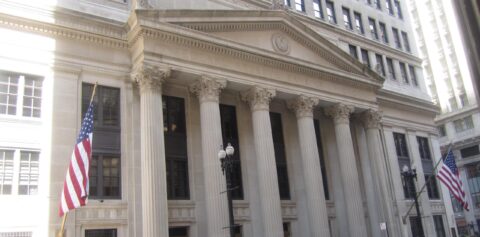Good news, everyone, the inflation that Americans are witnessing daily is temporary. That is, at least, what our enlightened technocrats at the Federal Reserve are desperately trying to convince the rest of the world of. The latest reassurance that there is nothing to be concerned about comes from Atlanta Federal Reserve Bank president Raphael Bostic, who claimed Wednesday that “much of the data recently has come in stronger than I expected.”
As Reuters reports, Mr. Bostic told reporters:
“GDP is on a strong trajectory. Inflation is higher and has been well above our target,” with the economy growing at 7% and inflation at 3.4% compared to the Fed’s 2% target.
Oh, he also noted that inflation is likely to last longer than he had originally thought. As he explained in an interview with NPR:
Now the one thing you said, which is something that we are looking at, is that when I talk to businesses, they are saying that it’s going to be temporary. Still, temporary is going to be a little longer than we had expected initially. So rather than it being a two- to three-month, it may be a six- to nine-month factor. And this is something that we’re going to have to pay attention to see if that changes how people approach the economy.
Going even further than Mr. Bostic is his colleague from Dallas, Robert Kaplan, who thinks that the economy is performing so well that the Fed may even need to consider soon “doing some things to take our foot gently off the accelerator sooner rather than later.”
The meaninglessness of these words should be obvious to anyone who has followed the Fed the last decade. Of course, the Fed does not have a monopoly on meaningless words emerging from the mouths of our technocratic class—what may concern Americans is the degree to which the Fed is counting on this PR campaign as a vital tool to prevent the financial crisis 2020 has created.
After all, along with the explicit tools with which it conducts monetary policy—such as open market operations, the discount rate, and reserve requirements—one the Fed takes just as seriously is its communication strategy. Since the 2000s, the Fed has actively viewed “forward guidance” as a tool that can allow it to alter economic behavior. As the Federal Reserve’s website explains:
When central banks provide forward guidance about the future course of monetary policy, individuals and businesses will use this information in making decisions about spending and investments. Thus, forward guidance about future policy can influence financial and economic conditions today.
To those ends, the Fed has created various communication tools—such as its dot plot—to illustrate the various forecasts for future economic performance from a variety of Federal Reserve governors and regional bank presidents. While the central bank sold this as an act of “transparency,” it is better understood as deliberate propaganda. In an age where an army of bots move markets based on financial Twitter, every future projection shared by a Fed official instantly has an immediate impact on economic behavior in the real world.
As such, the goal of public comments from Federal Reserve officials is always to convince the public that there is nothing to fear—the experts have things covered. Inflation is temporary. Growth is coming. All is well—no matter the economic struggles you yourself may be feeling. To do otherwise would may itself spark the very sort of crisis that the Fed fears.
This does not necessarily mean that either Mr. Bostic or Mr. Kaplan are cynical in their public statements. It is quite possible that both men sincerely believe their rose-colored forecasts and believe that America’s central bank is well positioned to steer the economy out of choppy waters. After all, government propaganda is most effective when it comes out of the mouths of those who truly believe it.
Unfortunately, the Fed’s biggest problem has been getting results to match their optimism.
Since 2010, the Fed has habitually overestimated future economic growth. Even more concerning, the Federal Reserve has repeatedly failed to follow policy timeframes it has set for itself in the past to reverse previous emergency policies.
As Jeff Deist noted in 2016:
Fed critics, again mostly Austrians, have argued since 2008 that “normal” monetary policy would never return, that QE would never be unwound and that artificially low (or even negative) interest rates were here to stay. In other words, that the Fed and its 300 Ivy League economists don’t know what to do other than kick the can down the road another few months while hoping for a miraculous economic recovery.
Fast forward to today, and the recovery hasn’t materialized. And Fed officials, current and former, are singing a different tune about ever restoring the balance sheet to pre-2008 levels.
The closest the Fed has come since was a slight bump in interest rates—still historically low—at the peak of the economic performance of the Trump administration, which provided policy relief in the form of regulatory and tax cuts. Even then, however, Jerome Powell’s modest attempts to leverage this meaningful economic growth to unwind the Fed’s intervention had to be reversed in early 2019 due to the adverse reaction in financial markets.
So, again, even prior to global economic shutdowns that massively disrupted supply chains, eviscerated small businesses, and put millions out of work, the Fed was lying through their teeth about the tools at their disposal to appropriately handle economic distress.
The question then is, what happens if we face an economic crisis at a time when the Fed is out of ammo for its current arsenal of policy tools?
Well, we can count on them giving themselves even more power—which has always been the primary justification for trying to replace cash with central bank digital currency (and why we should expect escalation from central banks against private cryptocurrencies.)
We can also be assured that they will promise they know exactly what they are doing.




